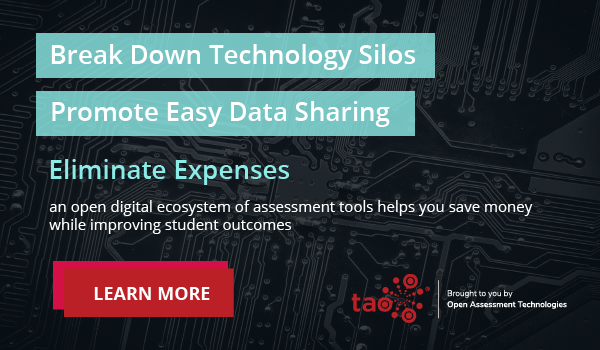More and more we hear that open source software is gaining traction in educational settings. If you are not completely familiar with open source, you might be asking yourself, “How can free software possibly be of any value?” or “What’s the catch?”
In schools and districts, open source education software has been gaining momentum as it fuels innovation in education and allows flexibility to the institutions that adopt it. Rather than being limited by the features offered in a proprietary solution licensed from a traditional vendor, a truly open source offering allows the user to freely access and modify the source code. This allows an institution to create the system they really need; a solution that works well with other Ed Tech solutions in the existing ecosystem.
In context, an earlier EdSurge article tells the story of how Philadelphia’s Science Leadership Academy came to build, adopt, and pave the way for other schools to use Slate, the open source “mainframe 2.0.”
More recently, open source technology has become widely popular in teaching and assessment as 2020 led to a rapid paradigm shift in global education, where remote learning now remains a mainstay. Education leaders across the world are looking for cost-effective solutions that give them precision control over their education software along with the ability to change and add to their digital infrastructure as needed.
Within this mind, here are some common and compelling reasons why educational decision-makers are increasingly turning to open source education solutions:
Flexibility and Control
Traditionally, when a school district adopts proprietary software for its core infrastructure, it can easily become locked into one solution or vendor, which greatly reduces choice and flexibility. Since educational policies, goals, and strategies change from time to time, a flexible, open infrastructure can better enable you to offer effective solutions and maintain control of your ecosystem without getting walled in.
Lower Cost of Ownership
Every district has a unique combination of students, styles of teaching, and operating models. Proprietary software is usually packaged to fit a generalized need, which naturally leads to a high acquisition cost. With open source education software, there is no licensing cost and decision-makers can pick and choose the exact components or features they need and package them into their system of choice, therefore providing a much lower total cost of ownership.
While open source software is free of licensing fees, there are associated costs including the technical expertise to implement, configure, deploy and support it. However, these costs are much lower than they would be when dealing with a locked, proprietary system. For instance, If you already have an EdTech stack and the infrastructure and IT team to manage it in place, you can reduce support and maintenance costs. Or, you can tap the services offered by the developers of the open source system without locking yourself into a proprietary system.
Interoperability
Open source education software applications and modules that are compliant with open standards like the ones from IMS Global can be combined to work seamlessly together. This plug-and-play approach brings great flexibility to the user, allowing a best-in-class approach where software from different vendors can be combined into one unified and fully tailored ecosystem.
Bringing the Sharing Economy to Education
TAO helps bring the advantages of a shared economy to education, empowering you to work with your peers globally, to learn and advance together. TAO creates the opportunity for you to leverage the high costs of software innovation by sharing the burden with TAO users around the world. For example, recent shared development in TAO’s Manual Scoring module of the upgrade to LTI 1.3 have been shared solutions driven by multiple European Ministries of Education that will benefit all future users of TAO.
—
In the long run, open source software in combination with open standards may prove to have more longevity than the proprietary systems that come and go. Thanks to the solid reliability of commercial entities and, of course, the innovative communities behind them, open source software will increasingly stay in the mind of Ed Tech leaders to meet the ongoing needs of educational progress.


